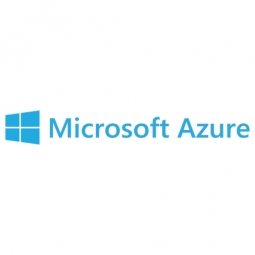Technology Category
- Cybersecurity & Privacy - Security Compliance
- Platform as a Service (PaaS) - Application Development Platforms
Applicable Industries
- Equipment & Machinery
- National Security & Defense
Applicable Functions
- Product Research & Development
- Sales & Marketing
Use Cases
- Behavior & Emotion Tracking
- Tamper Detection
Services
- Cloud Planning, Design & Implementation Services
- System Integration
About The Customer
Adobe is a multinational computer software company headquartered in the United States. It is known for its Creative Suite, which includes software like Adobe Photoshop, Acrobat Reader, and more. These products have been transitioned into a software as a service (SaaS) offering called Adobe Creative Cloud. In addition to this, Adobe introduced Adobe Experience Cloud, a set of marketing, analytics, and advertising tools to help brands deliver exceptional customer experiences. Adobe has over 10,000 employees and is a leader in the Partner Professional Services industry. The company has made Microsoft Azure its preferred cloud platform to ensure that its growing portfolio of cloud offerings runs fast, reliably, and securely.
The Challenge
Adobe, a leading software company, recognized the need to transition from simply creating beautiful content to understanding how people engage with that content. This understanding would allow businesses to refine their interactions with prospects and customers. To achieve this, Adobe introduced Adobe Experience Cloud in March 2017, a set of tools that complements Adobe Creative Cloud. However, as Adobe migrated more products to a SaaS model, it faced the challenge of finding a reliable and secure cloud platform to host its growing portfolio of cloud offerings. Adobe also needed to ensure that its open-source software-based products would be fully supported on the chosen cloud platform. Furthermore, Adobe had to address customer concerns about running their mission-critical applications, which include petabytes of confidential customer and sales data, in the cloud.
The Solution
Adobe signed a strategic partnership with Microsoft to make Microsoft Azure its preferred cloud platform. Azure was chosen due to its extensive support for open-source software and its multilayer security. Adobe's Experience Manager, part of Experience Cloud, was the first solution deployed in Azure, followed by Adobe Cloud Platform and Adobe Document Cloud. Adobe made extensive use of Azure platform as a service (PaaS) offerings such as Azure Data Factory, which allowed the company to integrate data from multiple hybrid sources at scale. Adobe also used Azure Data Lake Storage and Azure Virtual Machines. To address security concerns, Adobe provided evidence of Azure's multilayer security, which complies with multiple international and industry security compliance standards and certifications. Adobe also had the freedom to apply security at a granular resource level in Azure. Additionally, Adobe used Azure Security Center to quickly find and respond to potential vulnerabilities.
Operational Impact
Quantitative Benefit

Case Study missing?
Start adding your own!
Register with your work email and create a new case study profile for your business.
Related Case Studies.

Case Study
Smart Water Filtration Systems
Before working with Ayla Networks, Ozner was already using cloud connectivity to identify and solve water-filtration system malfunctions as well as to monitor filter cartridges for replacements.But, in June 2015, Ozner executives talked with Ayla about how the company might further improve its water systems with IoT technology. They liked what they heard from Ayla, but the executives needed to be sure that Ayla’s Agile IoT Platform provided the security and reliability Ozner required.

Case Study
IoT enabled Fleet Management with MindSphere
In view of growing competition, Gämmerler had a strong need to remain competitive via process optimization, reliability and gentle handling of printed products, even at highest press speeds. In addition, a digitalization initiative also included developing a key differentiation via data-driven services offers.

Case Study
Predictive Maintenance for Industrial Chillers
For global leaders in the industrial chiller manufacturing, reliability of the entire production process is of the utmost importance. Chillers are refrigeration systems that produce ice water to provide cooling for a process or industrial application. One of those leaders sought a way to respond to asset performance issues, even before they occur. The intelligence to guarantee maximum reliability of cooling devices is embedded (pre-alarming). A pre-alarming phase means that the cooling device still works, but symptoms may appear, telling manufacturers that a failure is likely to occur in the near future. Chillers who are not internet connected at that moment, provide little insight in this pre-alarming phase.

Case Study
Premium Appliance Producer Innovates with Internet of Everything
Sub-Zero faced the largest product launch in the company’s history:It wanted to launch 60 new products as scheduled while simultaneously opening a new “greenfield” production facility, yet still adhering to stringent quality requirements and manage issues from new supply-chain partners. A the same time, it wanted to increase staff productivity time and collaboration while reducing travel and costs.

Case Study
Integration of PLC with IoT for Bosch Rexroth
The application arises from the need to monitor and anticipate the problems of one or more machines managed by a PLC. These problems, often resulting from the accumulation over time of small discrepancies, require, when they occur, ex post technical operations maintenance.

Case Study
Robot Saves Money and Time for US Custom Molding Company
Injection Technology (Itech) is a custom molder for a variety of clients that require precision plastic parts for such products as electric meter covers, dental appliance cases and spools. With 95 employees operating 23 molding machines in a 30,000 square foot plant, Itech wanted to reduce man hours and increase efficiency.



